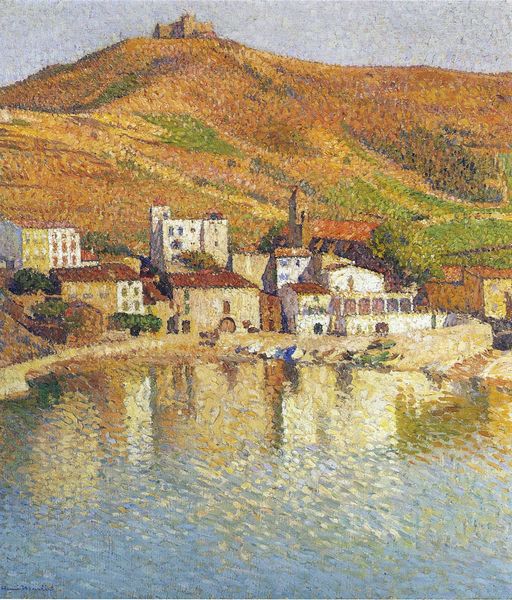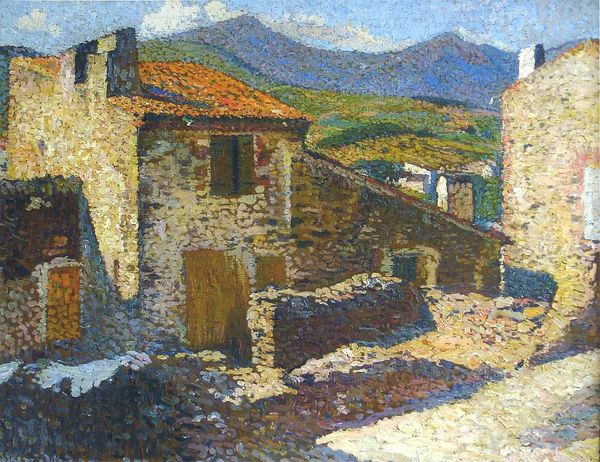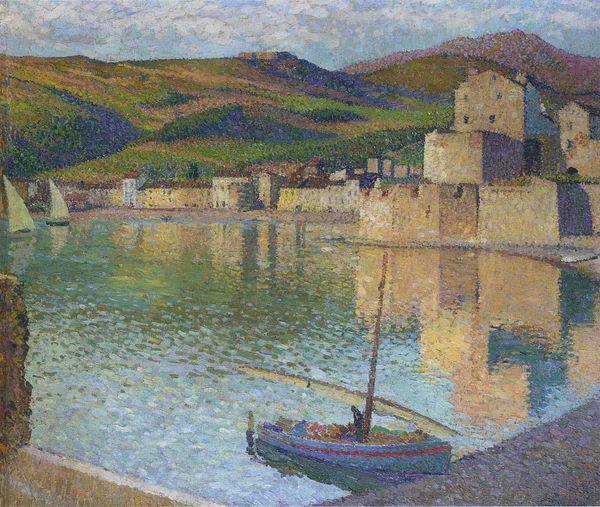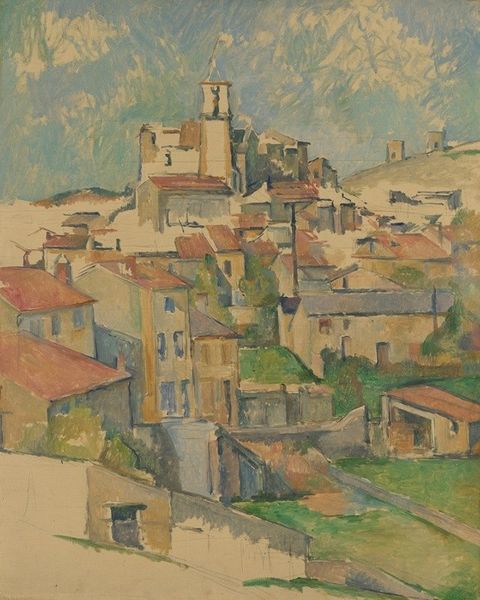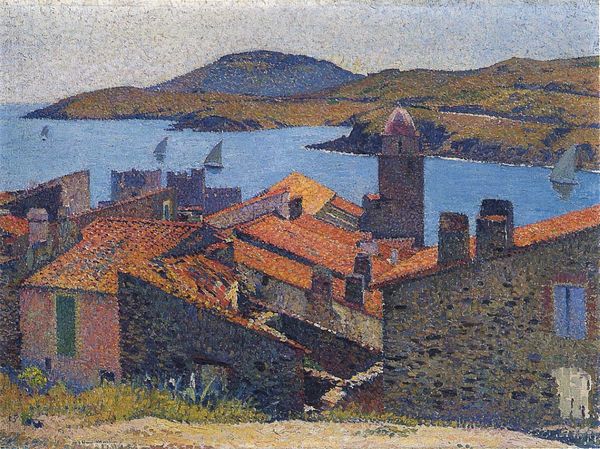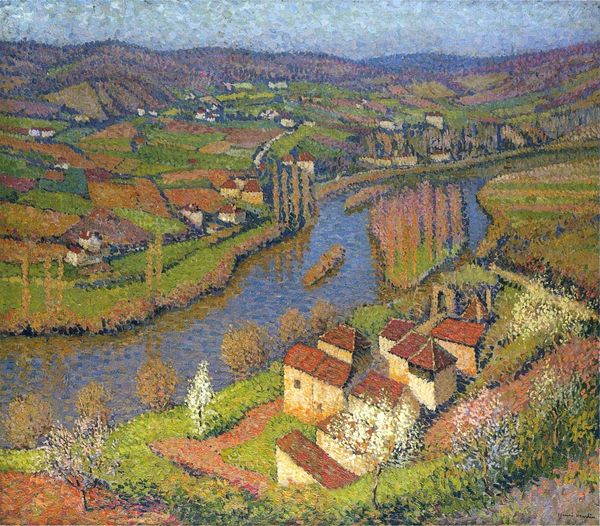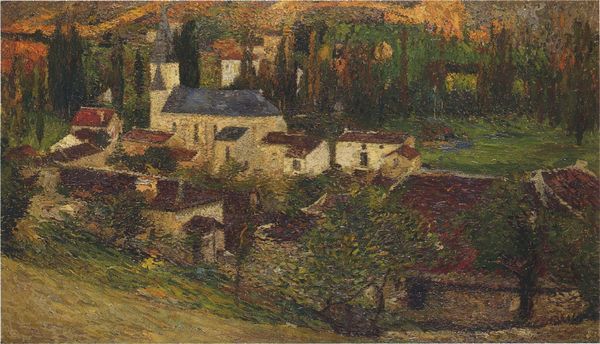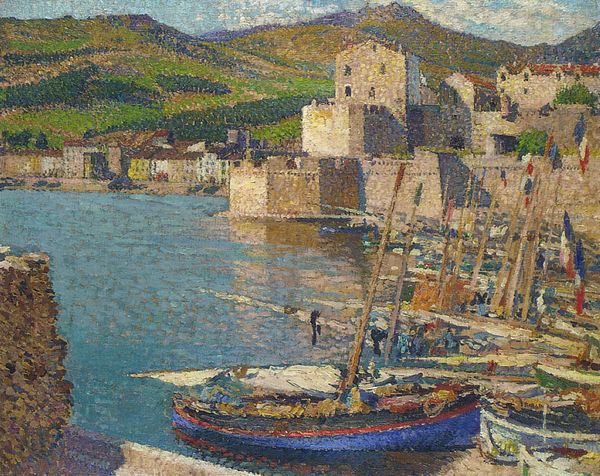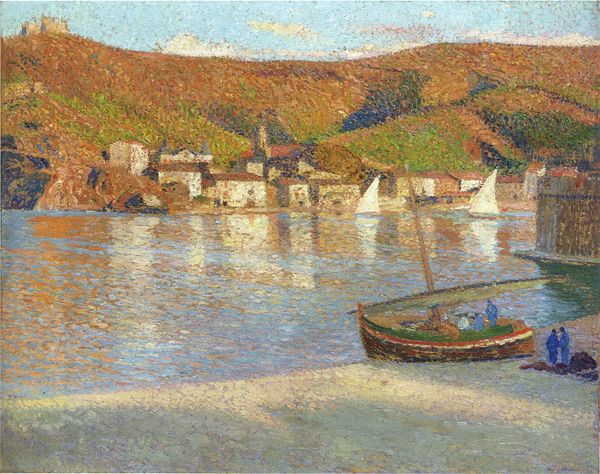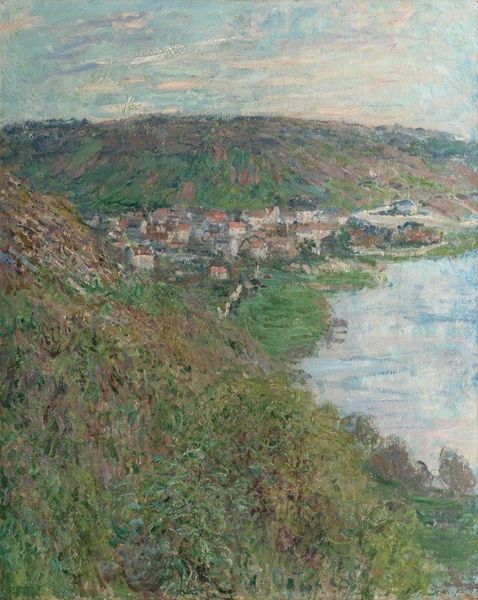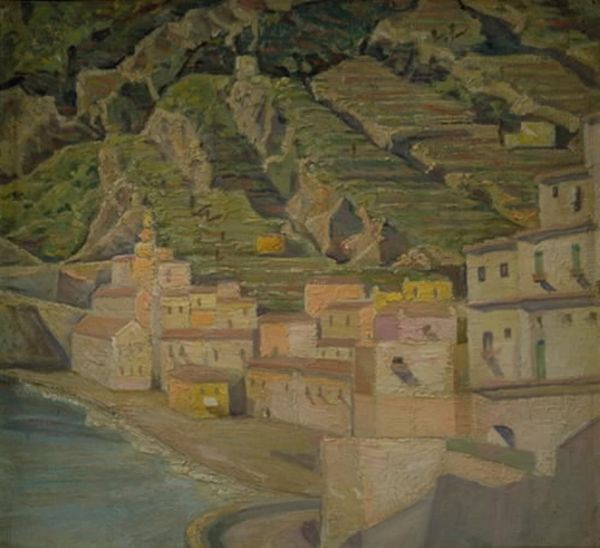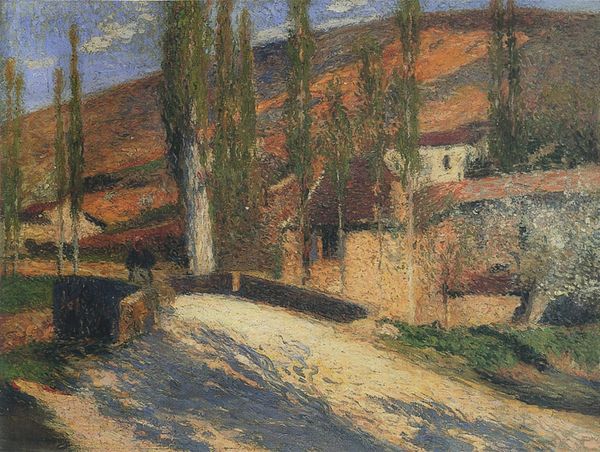
painting, oil-paint, fresco
#
painting
#
impressionism
#
oil-paint
#
neo-impressionism
#
landscape
#
fresco
#
oil painting
#
geometric
#
cityscape
#
building
Copyright: Public domain
Editor: So, here we have Henri Martin's "The Village at Port Collioure", an oil painting. I'm struck by the sheer number of tiny strokes, like the buildings are made of mosaics. It seems incredibly labor-intensive. What aspects stand out to you, considering Martin’s technique and material choices? Curator: The most compelling aspect for me is understanding how the material handling intersects with the social conditions of art production. Martin, though painting a beautiful scene, engaged in a deliberate, almost industrial approach with these repetitive brushstrokes. Think of the socio-economic implications – who had the leisure time and resources to purchase such a meticulously crafted object? Were there assistants involved in the groundwork? Editor: That’s interesting, I hadn't considered the support structure. So the style isn’t just aesthetic but also linked to its creation and consumption? Curator: Exactly. This isn’t just about *what* he paints, but *how*. Consider the implications of choosing oil paint; its cost, availability and longevity. Neo-Impressionism often evokes a Utopian, even idealized scene, but how might this ideal be tied to capitalist modes of production or class aspirations? Were these seaside views also investment opportunities? Editor: I see what you mean. It makes me reconsider the way I look at seemingly simple landscape paintings, there's always that history tied to making. Curator: Precisely. It moves beyond a beautiful vista. Questioning not just its formal qualities but who profited from and had access to that beauty is the essence of this type of analysis. I trust this work differently now. Editor: Absolutely, I'll carry a renewed way to understand art as connected with economic making as well.
Comments
No comments
Be the first to comment and join the conversation on the ultimate creative platform.
